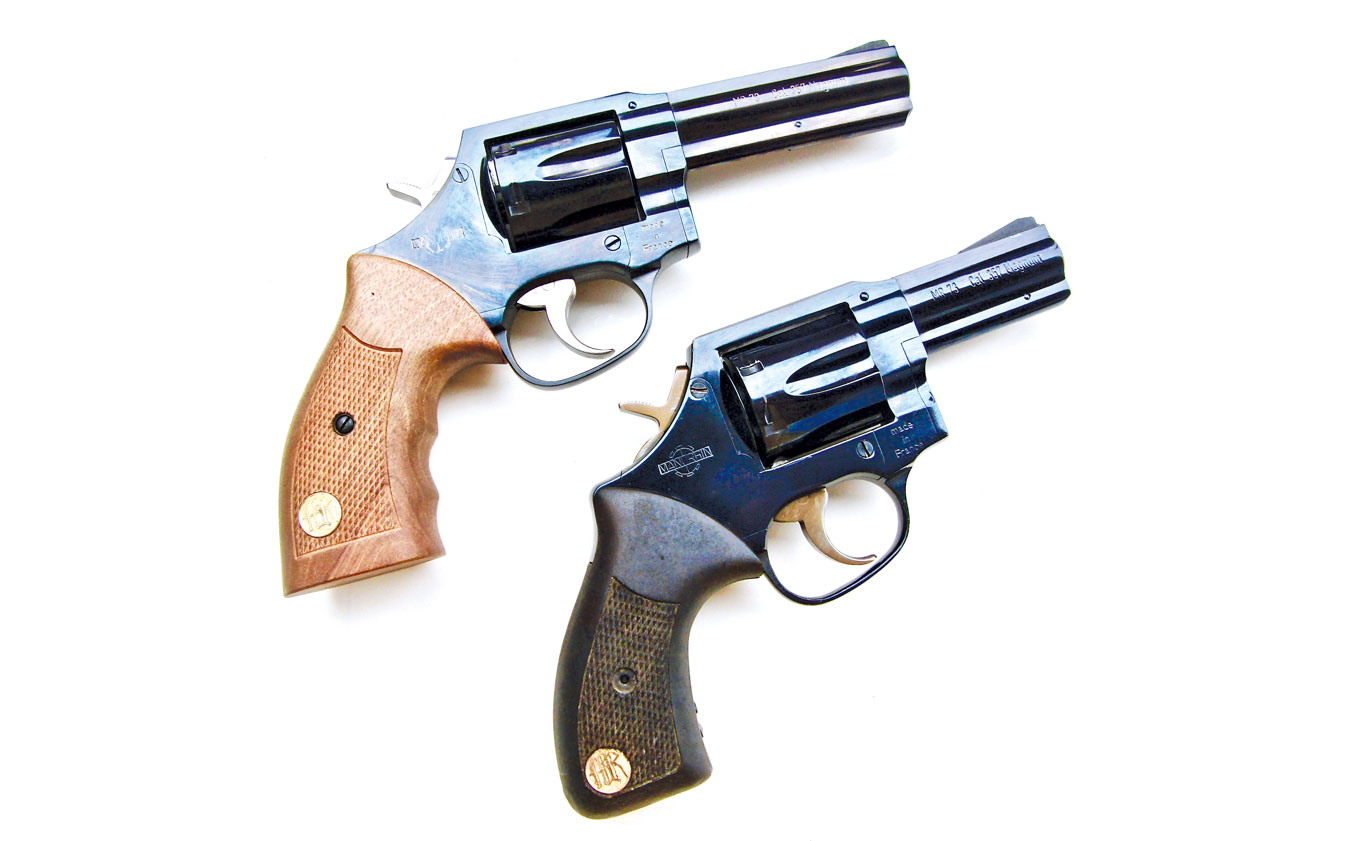
Raymond Sasia established the Police Nationale Training program to teach the techniques with the revolver he had brought back from the FBI. Notice that the S&W Model 19 with 3-inch barrel and fixed sights is pictured on the academy plaque. For greater durability, the Police Nationale went to Manurhin for the adjustable-sight MR73 (at left) and the fixed-sight MR73 (at right), both with 3-inch barrels.
I first encountered the Manurhin MR73 revolver in Europe during the 1970s. I found it intriguing that elite European counterterror units had adopted a revolver when U.S. law enforcement agencies were switching to the self-loading pistol. Don’t get me wrong, I like revolvers. At that time, however, I was still using the Browning High-Power and would switch before long to the SIG P-226. I had fallen prey to the high-cap magazine spell. In my defense, though, I had been working on protective teams where having the firepower to cover an evacuation under fire was necessary.

Even though the MR73 is relatively light for a magnum revolver, it
handles recoil well.
But, I found those French revolvers intriguing. Unlike American law enforcement officers, who had traditionally used revolvers, the French police had traditionally used autoloaders. Admittedly, a lot of those pistols were in .32 ACP, though the Gendarmerie Nationale used 9mm MAC50s. During the 1960s, France faced an increase in armed robberies, especially of banks, by the OAS (Organisation armee secrete), a group that also had attempted to assassinate President Charles De Gaulle on multiple occasions. It became apparent that the French Police had to improve their weapons and tactics.

For standard Police Nationale and some other units, the 3-inch or 4-inch MR73 with fixed sights became the issue weapon.
Raymond Sasia, who would become De Gaulle’s chief bodyguard, underwent training

